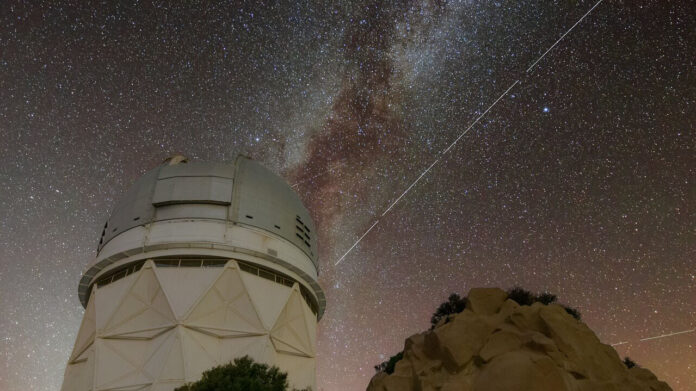A large satellite that’s designed to beam internet to consumer cell phones is now one of the brightest objects in the night sky—much to the chagrin of the astronomical community.
Their concerns revolve around the prototype BlueWalker 3 satellite from Texas-based AST SpaceMobile. Earlier this month, BlueWalker 3 fully deployed itself, resulting in the satellite’s massive 693-foot communication array unfolding over Earth’s orbit.
BlueWalker 3 satellite
(Credit: AST SpaceMobile)
The International Astronomical Union—which is made up of 12,000 members—now says it’s “troubled” by the satellite’s “unprecedented brightness,” especially since AST SpaceMobile has plans to launch dozens of additional BlueWalker-like satellites in the future.
“New measurements reveal that this low Earth orbiting satellite is now one of the brightest objects in the night sky, outshining all but the brightest stars,” the IAU said(Opens in a new window) in a statement on Monday. As evidence, the group provided several images that show BlueWalker 3 creating satellite streaks in the night sky, which can disrupt and photo-bomb telescopic observations.
Trail left by BlueWalker 3 over Kitt Peak National Observatory
(Credit: KPNO/NOIRLab/IAU/SKAO/NSF/AURA/R. Sparks)
The other concern about BlueWalker 3 is how the satellite is essentially designed to operate as an orbiting cell phone tower by beaming radio signals to cell phones on the ground. The problem is that these same radio signals can disrupt observations from radio-based telescopes on Earth, according to the IAU.
“Astronomers build radio telescopes as far away as possible from human activity, looking for places on the planet where there is limited or no cell phone coverage,” says Philip Diamond, director-general for SKA Observatory.
“Frequencies allocated to cell phones are already challenging to observe even in radio quiet zones we have created for our facilities,” Diamond added. “New satellites such as BlueWalker 3 have the potential to worsen this situation and compromise our ability to do science if not properly mitigated.”
Recommended by Our Editors
Despite the concerns, the IAU is not opposing the BlueWalker 3 satellite outright. The group’s statement points out that internet satellite systems including BlueWalker 3 are designed to address gaps in global broadband connectivity. Nevertheless, the IAU is urging companies to “minimize” the impact their satellites can have on astronomy.
AST SpaceMobile didn’t immediately respond to a request for comment. In the meantime, the IAU says it sent a letter to the FCC last month about the dangers next-generation satellites can have on astronomical research. The group has also been working with companies such as Starlink developer SpaceX to prevent their satellites from reflecting too much sunlight, although some astronomers still remain weary and opposed to future satellite constellations.
Get Our Best Stories!
Sign up for What’s New Now to get our top stories delivered to your inbox every morning.
This newsletter may contain advertising, deals, or affiliate links. Subscribing to a newsletter indicates your consent to our Terms of Use and Privacy Policy. You may unsubscribe from the newsletters at any time.
Hits: 0
















